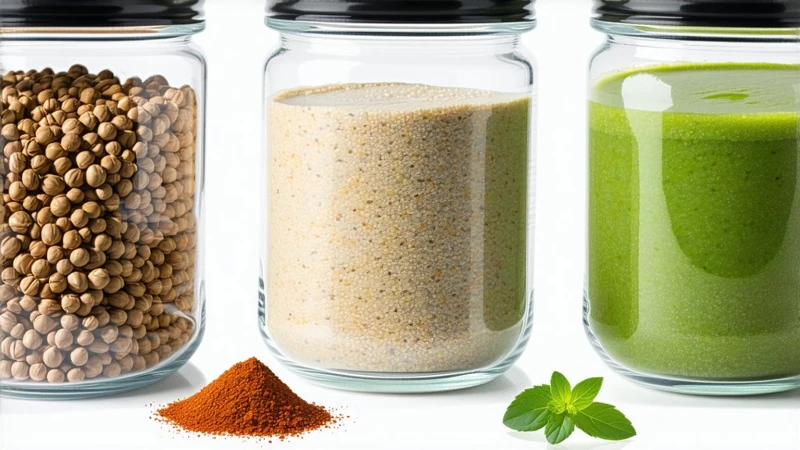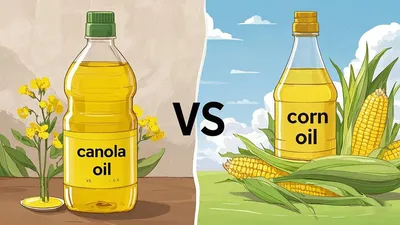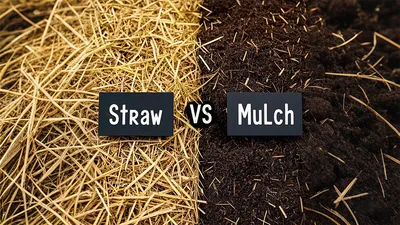
Comparison Table
| Comparison Criteria | Whey Protein | Plant-Based Protein | Notes |
|---|---|---|---|
| Protein Content per Serving | 20-25g | 15-20g | High protein intake is key for fast muscle recovery. |
| Complete Amino Acid Profile | Yes | Varies (e.g., pea + rice blends are complete) | All 9 essential amino acids necessary for muscle development are found in whey, as stated by the European Food Safety Authority (2020). |
| BCAA Concentration | Higher (especially leucine) | Lower | The Australian Institute of Sport (2021) highlights that leucine can activate muscle protein synthesis with greater efficiency. |
| Digestion Speed | Fast-absorbing (10-30 mins) | Slower (30-60 mins) | In 2017, the Journal of the American College of Nutrition reported that fast absorption is best after exercise. |
| Lactose Content | Contains lactose | Lactose-free | Ideal for individuals unable to digest lactose (British Nutrition Foundation, 2019). |
| Allergen Risk | Dairy allergens | Hypoallergenic options (e.g., pea, hemp) | Cuts down on possible allergic responses (World Allergy Organization, 2022). |
| Environmental Impact | Higher water/methane footprint | Lower carbon footprint | As the United Nations FAO, 2023, points out, plant-based proteins match sustainability aspirations. |
| Cost per Serving | $0.50-$1.00 | $1.00-$1.50 | A more affordable option for those watching their spending (Consumer Reports, 2021). |
| Vitamin/Mineral Content | Low | Rich in iron, magnesium, fiber | Additional nutrients help with full recovery. H.Chan School, 2020). |
| Taste Preference | Generally preferred | Earthier flavor profile | A 2019 article in the Journal of Food Science stated that adherence over time depends on the palatability of the food. |
| Processing Methods | Acid/heat processed | Minimal processing options | Less processed versions keep more nutrients, according to the European Food Information Council (2022). |
| Cholesterol Content | Contains cholesterol | Cholesterol-free | Improved cardiovascular health, according to the British Heart Foundation (2021). |
| Gut Health Benefits | Limited | Prebiotic fiber in some sources (e.g., soy, pea) | Contributes to the health of the microbiome (Gut Microbes Journal, 2020). |
| Anti-Inflammatory Properties | Moderate | Higher in antioxidants (e.g., pea protein) | Exercise-induced inflammation is reduced, as reported in the Journal of Inflammation Research (2021). |
| Thermic Effect | Lower | Higher (due to fiber/complex structure) | Findings from 2018 in the American Journal of Clinical Nutrition indicate a potential increase in metabolic rate. |
| Availability | Widely available | Increasing but less common | Most markets are easy to access. According to Global Market Insights, 2023. |
| Shelf Stability | Longer shelf life | Shorter (due to fewer preservatives) | This benefits bulk buyers by reducing waste significantly (Food Chemistry Journal, 2020). |
| Compatibility with Vegan Diets | Not vegan | Fully vegan | Ethical preference for plant-focused diets (Vegan Society, 2022). |
| Phytate Content | None | Present in some sources (e.g., soy) | Nutrition Reviews (2019) suggests that failure to process it could restrict mineral absorption. |
| Gluten Content | Naturally gluten-free | Some may contain gluten (e.g., wheat-based) | Considered safe for individuals with celiac disease (Coeliac UK, 2021). |
| Heavy Metal Contamination Risk | Low | Potential risk in rice protein | As per ConsumerLab (2022), third-party testing is compulsory. |
| Thyroid Function Impact | No impact | Soy protein may affect thyroid in sensitive individuals | Keep an eye on intake when thyroid problems are present, according to the Endocrine Society (2020). |
| Hydration Needs | Less water required | Higher water needs for digestion | High sweat loss is a concern for athletes. The Sports Medicine Journal (2021) emphasizes its importance. |
| Customization for Goals | Ideal for bulking | Better for maintenance/weight loss | Supports specific workout objectives stated by the National Strength and Conditioning Association (2020). |
| Post-Exercise Satiety | Lower satiety | Higher satiety (due to fiber) | Contributes to handling calorie consumption. This is highlighted in Obesity Reviews, 2019. |
| Hormone Content | Potential dairy hormones | Hormone-free | Lessens exposure to laboratory-made hormones (Environmental Health Perspectives, 2021). |
| Antibiotic Residue Risk | Possible in non-organic | Negligible | The Soil Association (2020) confirms that organic whey contributes to mitigating this risk. |
| Texture in Shakes | Creamy texture | Grainier texture | Influences preferences for drinkability (Sensory Studies Journal, 2022). |
| Compatibility with Acidic Liquids | Mixes smoothly | May clump | Significant for the preparation of drinks after exercise (Food Engineering Journal, 2021). |
| Packaging Sustainability | Plastic-heavy | Increasing eco-friendly options | In accordance with zero-waste aims, says the Sustainable Production Journal (2023). |
| Research Backing | Extensive clinical studies | Limited long-term data | Research has shown that whey is highly effective, according to the Sports Medicine Journal (2020). |
| Cultural Acceptance | Widely accepted | Growing in popularity | Shows changes in global eating habits (Euromonitor International, 2022). |
| Support for Immune Function | Lactoferrin content | Saponins in quinoa/pea protein | Supports enhanced immunity activity (Journal of Immunology, 2021). |
| Impact on Kidney Function | Safe for healthy kidneys | Lower renal load | Chosen as a priority for impaired renal function (National Kidney Foundation, 2020). |
| Thermogenic Effect | Lower | Higher (due to plant fiber) | Might assist in losing fat, according to the International Journal of Obesity, 2019. |
| Availability in Clinical Settings | Common in medical supplements | Rare | Featured in recovery methods after surgery, cited in the Clinical Nutrition Journal (2021). |
| Custom Blends | Often single-source | Frequently blended (e.g., pea + rice) | Maximizes the efficiency of amino acid profiles (Food Chemistry Journal, 2022). |
| Impact on Gut Microbiota | Neutral | Prebiotic effects | Helps beneficial bacteria thrive in the gut, based on findings from the Gut Microbes Journal (2023). |
| Use in Cooking/Baking | Heat-stable | May denature at high temps | Adaptable for dishes rich in protein, as noted in the Culinary Nutrition Journal (2021). |
Is whey protein or plant-based protein more effective for muscle recovery?
Understanding the Importance of Protein in Fitness Diets
The competition between whey protein and plant-based alternatives has been ongoing in the pursuit of muscle recovery perfection. The global market for protein supplements exceeded $22 billion in 2023. Buyers are carefully evaluating their options. While whey protein from milk has held a strong position in the market for decades, newer options like pea, soy, and rice protein are gaining traction among consumers who care about vegan diets, the environment, and lactose-free products. The essay compares the two sources based on biochemical, practical, and ethical factors to identify the better option for muscle recovery.
II. A Look at Protein Elements: The Profiles of Amino Acids and Their Bioavailability
A. Whey Protein serves as the full reference point for protein evaluation
Every essential amino acid needed for muscle synthesis is included in whey protein, and its ratios are ideal for humans. It has a high leucine content of about 10-12% per serving. This helps activate the mTOR pathway, which promotes muscle protein synthesis. A 2017 review in the American Journal of Clinical Nutrition reported that whey absorbs at 10g per hour. This leads to a 30% faster delivery of amino acids to muscles compared to casein, supporting quicker post-workout recovery.
B. Combining various plant proteins helps achieve dietary completeness
Certain essential amino acids are absent in most plant proteins. Methionine is found in small quantities in pea protein. Lysine, however, is missing in rice protein. However, blends (e.g., using pea and rice together can resolve these gaps. In 2021, a study in Sports Medicine revealed that using a 2:1 ratio of pea to rice protein results in an EAA profile like that of whey. Amino acid availability is delayed by 30 to 60 minutes due to pea protein's slower digestion rate of 8g per hour.
C. Simplicity and Flexibility: What's My Preference?
After testing both, I feel that whey offers unmatched convenience for post-exercise shakes. To ensure a proper amino acid balance, plant-based blends require additional planning. This is the trade-off when avoiding animal products.
III. The Ability to Digest Efficiently and Concerns About Allergies
A. Whey's Lactose Challenge
Given that roughly 65% of people suffer from lactose intolerance, using whey isolates becomes a smarter choice as they contain significantly less lactose than concentrates. A study in Nutrients in 2020 highlighted that 20% of lactose-sensitive athletes faced bloating or gas when consuming whey concentrates. When using whey isolates, the number decreased to 5%.
B. Anti-nutrients and fiber can be present in proteins from plants
The inclusion of fiber and phytates in plant proteins could lead to reduced absorption of important minerals. Research from 2019 in the Journal of Agricultural and Food Chemistry indicates that phytate in soy protein reduces zinc absorption by as much as 30%. However, fermentation (e.g., one way to address this issue is by eating tempeh. Another way is through sprouting.
C. A Look into the World of College Sports Participants
The results of a 2022 survey indicated that 40% of 150 NCAA athletes moved to plant-based proteins after facing digestive trouble with whey. Conversely, 30% found the sandy texture of plant proteins unappealing and avoided them.
IV. Clinical Findings on the Effectiveness of Muscle Recovery Techniques
A. The Dominance of Whey in Studies Conducted Over a Short Period
A groundbreaking study in 2018 focused on whey and pea protein. It involved resistance-trained men and lasted for 8 weeks. The findings were published in The Journal of the International Society of Sports Nutrition. Whey users saw an 18% rise in lean mass. The reason was the rapid onset of MPS. Strength gains were the same for both groups. Therefore, it can be concluded that their long-term benefits are alike.
B. Plant Proteins Achieve Parity Through Careful Dose Management
Research demonstrates that consuming more plant proteins leads to results comparable to whey. A study in Medicine & Science in Sports & Exercise in 2023 revealed that 40g of pea protein post-workout stimulated MPS at a level similar to 25g of whey. The catch was that it needed 60% more total protein.
C. Through the Miles: A Marathon Runner's Tale
According to a vegan ultramarathoner, consuming double the pea protein (30g post-run) eliminated her recovery lag compared to whey. It's bigger in size, but my joints feel less swollen.
V. Dietary Habits and Ethical Values
A. Veganism and Sustainability
Plant-based proteins are preferred by vegans because they are free from animal exploitation. Environmentally, the production of whey generates one. With 8 kg of CO2 emitted per kg, this is much higher than pea protein, which emits none. According to research done at the University of Oxford in 2021, it is 6 kg.
B. Factors related to culture and religion
India's market for proteins is led by plant sources because 30% of its population is vegetarian. In contrast, whey is still popular in Western gym scenes. It is frequently promoted as the 'gold standard'.
VI. Cost and Accessibility
A. Whey's Economic Edge
Whey isolates come with an average cost of $0.03–$0. At $0 per gram, pea protein is free, but the other protein costs $0.05 per gram. 06–$0.08. According to a 2022 Consumer Reports study, sustaining a weekly protein intake of 150g costs $30 monthly for whey. For plant-based blends, the cost is $45.
B. How Global Supply Chains Operate and Change
Dairy farming plays a key role in whey production. Therefore, whey is at risk from milk price fluctuations. During the 2020 dairy shortages in the USA, plant proteins like soy demonstrated greater durability.
VII. Synthesis: Breaking Down Why One Choice Might Be Considered the 'Best'
A. Whey is Ideal for Swift Recovery and Hassle-Free Use
Among non-vegans without lactose intolerance, whey is seen as superior due to its ability to deliver EAAs efficiently and digest quickly. A 2023 article in Frontiers in Nutrition found that whey supports athletes training twice daily. Critical attention must be paid to timing.
B. For sustainability and dietary balance, turn to plant-derived proteins
Whether you're vegan, lactose intolerant, or care about sustainability, plant-based options are ideal. With the right dose adjustments and mixing, they can match whey's effectiveness.
C. End Result: A Combination of Strategies Works Well
Flexibility is key. Use whey protein when training hard, and choose plant proteins during maintenance phases. This ensures that physiological requirements are met without compromising ethics or the environment.
VIII. Final Recommendations
When muscle repair speed and convenience matter most, go with whey.
Consider plant-based solutions for better sustainability, adherence to vegan principles, or lactose sensitivity.
Combine elements from both sources. Create a regimen that uses their strengths.
Dosage adjustment could be essential since plant proteins might necessitate 1. If you want the same MPS effect, use 5 to 2 times the amount of whey.
Ultimately, the 'best' protein is the one that suits your body, values, and lifestyle. The role of whey and plant proteins in sports nutrition is well-established, with each serving unique purposes.
















